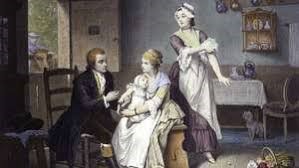One of the things that has been hitting the headlines a lot lately is of course the subject of vaccinations. These are something that a lot of people feel strongly about and during these strange times, there has been a lot of discussion surrounding vaccinations and the arguments on both sides have been extremely heated.
Vaccinations are something that we have actually utilised for centuries. Nowadays, would-be vaccines are put through their paces with a whole host of tests, rigorous trials and things like bridging studies, like these done by Richmond Pharmacology. However, going all the way back to the creation of the very first vaccines, this was not how it was done then.

In a small village in rural Gloucestershire, the story of vaccination begins. Edward Jenner, a local doctor had started to notice something peculiar. At the time, Smallpox, a deadly disease was rife in the population and Doctor Jenner noticed that there seemed to be one group of people who were seemingly immune to this deadly illness – milkmaids. His theory was that these milkmaids, who spent a lot of time with cows all contracted cow pox at one time or another. He was certain that this was what made them immune to the much more deadly smallpox – and this was a theory that turned out to be correct.
In 1796, Jenner tested this theory in a way that would never be allowed by modern day standards of clinical testing! He collected some of the pus from a cowpox infected milkmaid, he then went on to inject it into a local eight year old boy. The boy did indeed contract cowpox – but Jenner firmly believed this would protect him from the far more deadly illness – and as years went by, it was proven that he was right. Many more people then started to catch onto this, and scientists were able to start developing the vaccination for smallpox.

Sadly, this of course took time, and during this period many more lives were lost to the deadly smallpox. In fact, it would be hundreds of years before the vaccine would be available to everyone on the planet, and with a lot of effort and the fantastic work of many organisations, this deadly illness was wiped from the face of the planet in 1979 – nearly 200 years after doctor Jenner’s first experiment on the young boy in Berkeley.
Of course, this was not the only deadly disease out there, and shortly after the success of Jenner’s smallpox vaccination became apparent, scientists set about researching the other illnesses that may also be reduced by using vaccinations. In the years that followed, many scientists developed vaccinations for a wide range of deadly illnesses – these include measles, tuberculosis (the BCG or Bacillis Calmette Guerin vaccine which is still in use to this day) and polio. Developing vaccinations continues to be one of the biggest priorities for scientists, particularly with the recent pandemic, but effective vaccines remain a key part of health in an overall population.



